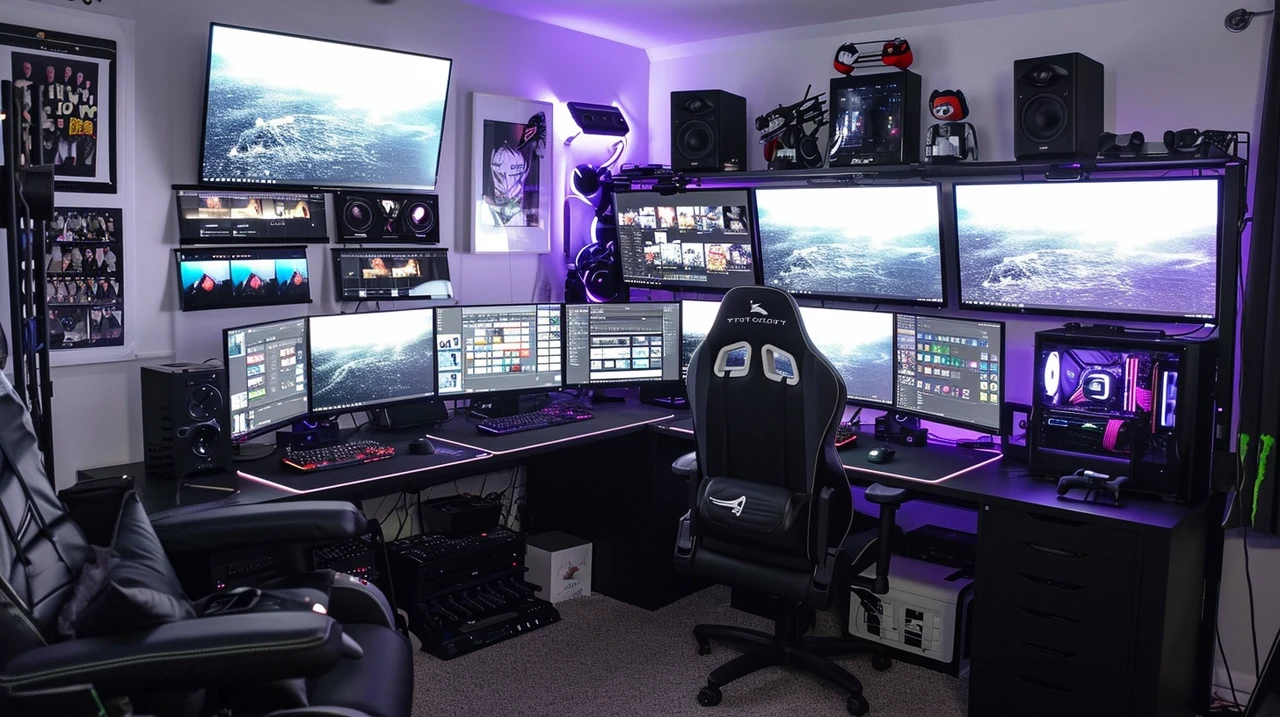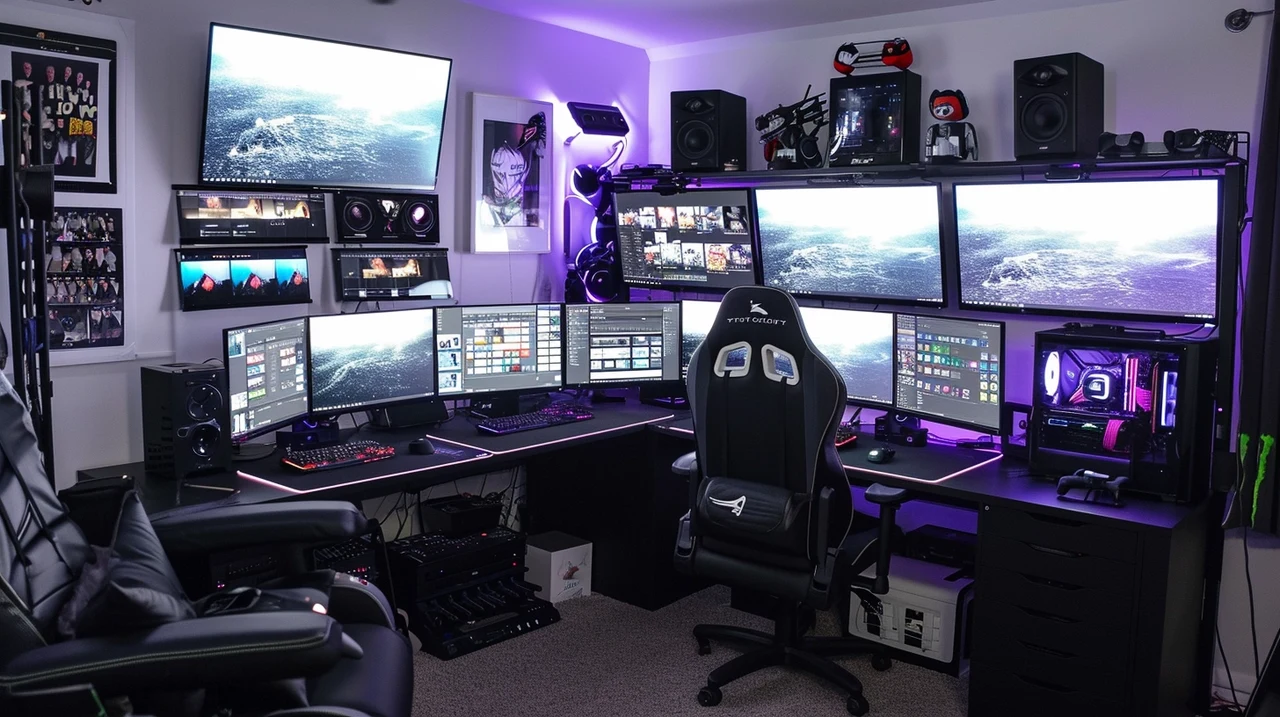
The world of livestreaming is on the brink of a significant shift, thanks to a collaborative effort from industry giants Twitch, OBS, and NVIDIA. They have come together to introduce a new feature that is currently in its beta phase, known as Twitch Enhanced Broadcasting. This development is poised to change the way streamers connect with their audiences, offering a more inclusive and adaptable viewing experience.
At the heart of this new feature are the GeForce RTX GPUs, which empower streamers to broadcast their content in multiple resolutions, with 1080p being the highest currently available. This means that regardless of whether viewers are tuning in through a high-speed fiber connection or a more modest mobile network, they will be able to enjoy a seamless streaming experience. The technology is not just about the present; it’s also looking ahead, preparing to support even higher bit rates and resolutions, potentially up to 4K, and the ability to handle up to five streams at once.
The future of video encoding is also an exciting aspect of this initiative. With the introduction of new codecs like AV1 and HEVC, viewers can expect high-quality video that doesn’t consume as much data, making streams more accessible without compromising on visual fidelity. The NVENC encoder, a critical component of GeForce RTX and GTX GPUs, plays a vital role in this process. It ensures that streams are of high quality while keeping the impact on system performance to a minimum.
Today many streamers must choose between higher resolution and reliable streaming. High-quality video provides more enjoyable viewing experiences but causes streams to buffer for viewers with low bandwidth or older viewing devices. Streaming lower-bitrate video allows more people to watch the content seamlessly, but introduces artifacts.
For content creators, the integration process with OBS has been designed to be as smooth as possible. Twitch Enhanced Broadcasting is engineered to automatically fine-tune OBS encoder settings, which means streamers can dedicate more time to engaging with their audience instead of fiddling with complex technical settings.
Here are some other articles you may find of interest on the subject of streaming technologies and accessories:
What is multi-encode livestreaming
Multi-encode livestreaming refers to the process of encoding a live video stream into multiple bitrates and resolutions simultaneously. This technique is essential for optimizing the viewing experience across various devices and internet speeds. Here’s a breakdown of its key aspects:
- Encoding Process: Encoding is the conversion of raw video files into a digital format suitable for streaming. In multi-encode livestreaming, this process occurs in several different quality levels (bitrates and resolutions) at once.
- Adaptive Bitrate Streaming (ABS): This is often used in conjunction with multi-encode livestreaming. ABS allows the video player to dynamically switch between different quality streams based on the viewer’s internet speed. For example, someone with a high-speed connection might receive a high-definition stream, while another with a slower connection gets a lower-resolution version.
- Benefits:
- Improved Accessibility: Viewers with varying internet speeds can access the content without constant buffering.
- Enhanced User Experience: Provides a smooth viewing experience as it can dynamically adjust to the best possible quality.
- Technical Requirements:
- Processing Power: Multi-encoding is resource-intensive, requiring significant processing power.
- Bandwidth: Broadcasting multiple streams simultaneously demands more bandwidth.
- Applications: It’s widely used in various platforms like YouTube, Twitch, and other streaming services, especially for live events, gaming, webinars, and educational content.
Those eager to be at the forefront of this technological shift can sign up for the beta on a first-come, first-served basis. It’s advisable to register promptly to secure a spot, and upon doing so, instructions will be sent via email on how to start utilizing Twitch Enhanced Broadcasting.
AV1 vs H.264
Both are video codecs, but they differ in their efficiency and application. Here’s an overview:
- Background:
- H.264 (AVC): Introduced in 2003, H.264 has been the standard for video compression for many years. It’s widely compatible with various devices and platforms.
- AV1: A newer codec, developed by the Alliance for Open Media, released in 2018. It’s designed to be more efficient and open-source.
- Efficiency:
- Compression: AV1 is more efficient in terms of compression compared to H.264. It can compress video files to a smaller size while maintaining the same quality, or provide better quality at the same file size.
- Bandwidth Reduction: For streaming platforms, AV1 can significantly reduce bandwidth requirements. This is crucial for reducing costs and improving streaming quality, especially at higher resolutions like 4K.
- Performance:
- Encoding Time: AV1’s advanced compression techniques come with a trade-off in encoding time and computational resources. It requires more processing power and time to encode compared to H.264.
- Decoding: While AV1 decoders are becoming more widespread, H.264 still has broader compatibility, especially in older devices.
- Adoption and Support:
- Industry Adoption: AV1 is gaining traction, with support from major companies like Google, Netflix, and Amazon. However, H.264 remains ubiquitous due to its long-standing presence and compatibility.
- Hardware Acceleration: Newer devices are beginning to include hardware support for AV1, which will reduce the decoding burden and promote wider adoption.
- Use Cases:
- H.264: Still preferred for legacy systems or where compatibility is a key concern.
- AV1: Ideal for high-resolution streaming services, future-proofing content, and where bandwidth efficiency is critical.
This collaboration is set to redefine the standards of livestreaming. By harnessing the capabilities of GeForce RTX GPUs for multi-encode streaming, the initiative is not just about elevating the quality of streams. It’s also about expanding the reach of content to viewers, no matter their hardware or internet limitations, ensuring that everyone can enjoy a high-quality streaming experience. As the beta progresses, those who sign up can look forward to being part of a significant shift in how live content is shared and consumed.
Filed Under: Gaming News, Technology News, Top News
Latest timeswonderful Deals
Disclosure: Some of our articles include affiliate links. If you buy something through one of these links, timeswonderful may earn an affiliate commission. Learn about our Disclosure Policy.

